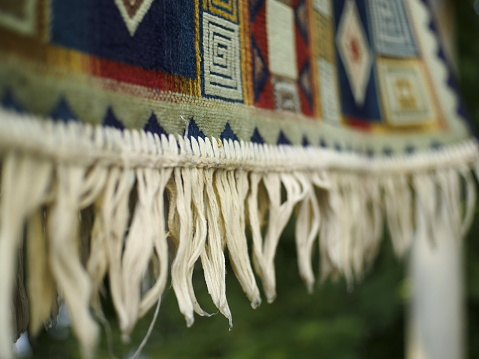There is a huge selection of rugs. To make the right choice, decide how the rug will be used, how the room will be furnished, what the floor looks like now, and how much you’re willing to pay for the rug.

Rugs are good for decorating floors, keeping your feet warm, and reducing noise. Depending on where the rug is located in the home, it can be subject to a lot of wear and tear. So it is best to consider the requirements that the rug must meet before choosing one for your home.
Types of rugs
The shapes and colors of rugs do not appeal to all decors and not all types of rugs are created equal; you wouldn’t want a shag rug in your entryway and you wouldn’t want AstroTurf in your living room. Here are some factors to keep in mind when choosing a rug for your home.

- Rugged rugs have short, tough fibers. They are often made wholly or largely from synthetic fibers.
- Higher quality rugs are usually made from deep pile natural fibers. They are softer, but also get dirty more easily and require more maintenance.
- With loop pile rugs, the pile yarns are made of wool, synthetic fibers or a fiber blend and they are sewn into the base fabric. Since loop pile rugs are relatively impervious to stains, they are a good choice for rooms with more traffic.
- Plush rugs are cut pile rugs in which the loop pile is sheared for a softer texture. Due to its velvety surface, this type of rug works well in bedrooms or living rooms. A plush carpet in which the threads have been twisted in half under the heat is particularly robust.
- Needlepunched mats are highly technically designed and durable. They are produced by electrostatic attraction of individual fibers, which creates a very strong carpet. Hotels and businesses often have needlepunched mats, but, for most homeowners, this heavy-duty mat is overkill.
The good choice

- On wood, laminate or stone floors, the main function of a rug is to create an accent, so design is extremely important.
- A carpet in the children’s room should be easy to clean and maintain. Choose one that hides stains or is easy to clean.
- In an office space with office chairs that are constantly moving around, carpets need to be durable.
- Different types of certificates provide useful information when purchasing a rug. The GoodWeave program, for example, combats illegal child labor in the carpet industries of India, Pakistan and Nepal. A regular component of their program is surprise shop inspections.
Tip: The main indicators of a rug’s quality are its density (how the individual strands are wrapped together), its twist (how many times the fibers of the rug have been spun), and its pile height (the height of the fibers). . To check the quality of a rug, fold it backwards. The less you see of the back, the higher the density and quality of the carpet. Look for individual carpet fibers that are tight and neat; loose or flared strands indicate inferior quality. And finally, as a general rule, the higher the quality of the pile, the better the carpet will look.
